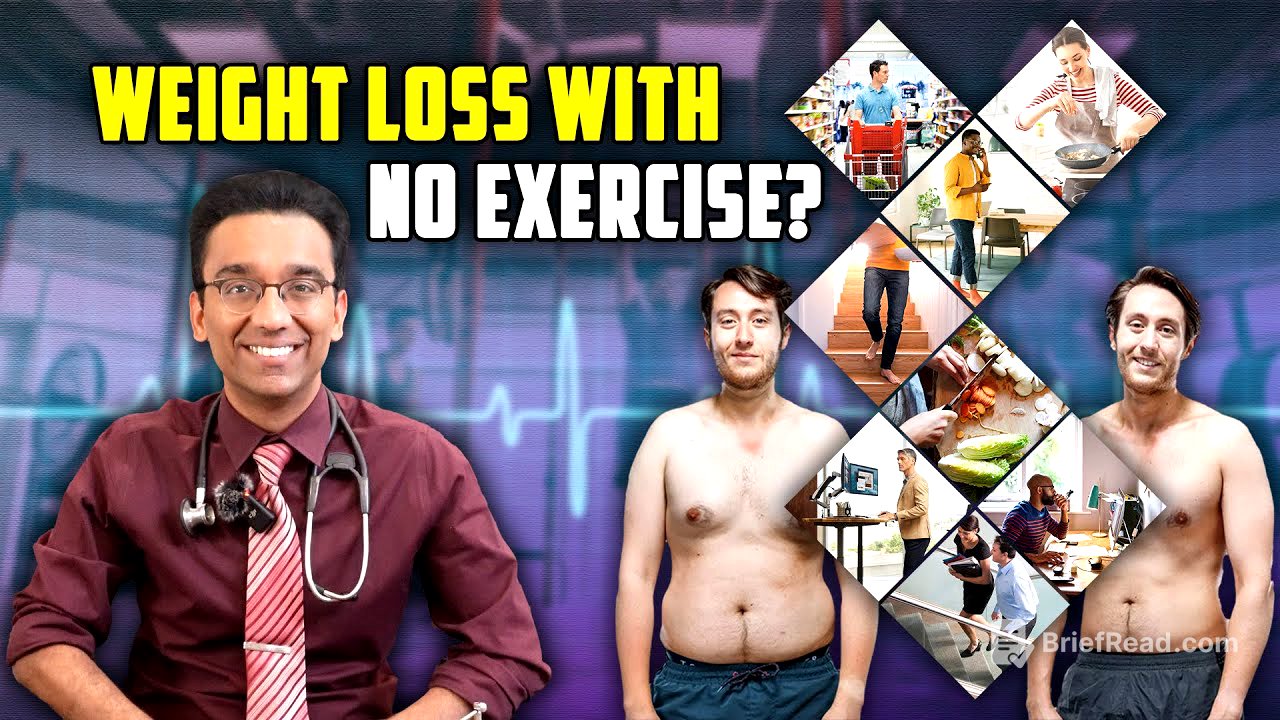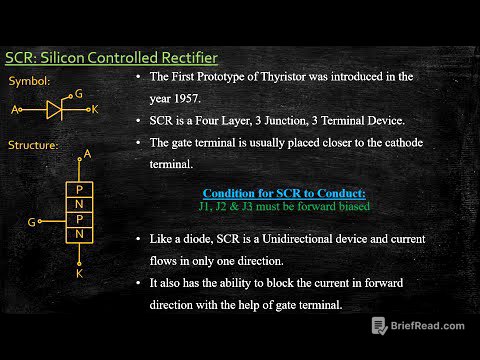TLDR;
This video discusses the importance of non-exercise activity thermogenesis (NEAT) in weight loss. NEAT refers to the calories burned through everyday activities like standing, walking, and gardening. The video emphasizes that while exercise is crucial, NEAT can significantly contribute to calorie expenditure and weight loss. It provides five practical tips to incorporate NEAT into daily life, including taking the stairs, walking every hour, cooking at home, using a standing desk, and walking whenever possible.
- Exercise is important for weight loss, but NEAT can significantly contribute to calorie expenditure.
- NEAT includes everyday activities like standing, walking, and gardening.
- The video provides five practical tips to incorporate NEAT into daily life.
Exercise vs. NEAT: The Secret to Weight Loss [0:00]
Dr. Pal explains that while exercise is crucial for weight loss, it only accounts for 20% of the overall outcome. The remaining 80% depends on diet and calorie intake. He emphasizes the importance of "eat not that eat," which stands for exercise-induced activity thermogenesis. This refers to the calories burned through exercise, which is essential for weight loss.
NEAT: Non-Exercise Activity Thermogenesis [2:38]
Dr. Pal introduces the concept of NEAT, which stands for non-exercise activity thermogenesis. He explains that NEAT is often underestimated but can significantly contribute to calorie expenditure. NEAT includes everyday activities like standing, typing, walking, and gardening. He highlights that the body doesn't like to stay still, and any movement can contribute to calorie burning.
NEAT vs. Sedentary Lifestyle [3:27]
Dr. Pal discusses a study comparing NEAT energy expenditure between sedentary people and those who are actively working. The study found that sedentary individuals have significantly lower NEAT activity compared to those who are more active during their workday. This suggests that even with the same calorie intake, sedentary individuals are more prone to obesity.
Incorporating NEAT into Daily Life [4:42]
Dr. Pal provides five practical tips to incorporate NEAT into daily life:
- Take the stairs: Instead of using the elevator, take the stairs whenever possible.
- Walk every hour: Aim for 1,000 steps every hour for 10 hours, rather than trying to achieve 10,000 steps all at once.
- Cook at home: Cooking at home not only promotes healthy eating but also involves physical activity like cleaning dishes and preparing food.
- Utilize a standing desk: Standing desks encourage movement and calorie burning compared to sitting for long periods.
- Walk whenever possible: Walk during phone calls, Zoom meetings, and grocery shopping.
Summary and Conclusion [7:20]
Dr. Pal summarizes the video by emphasizing the importance of incorporating NEAT into daily life alongside exercise and a healthy diet. He encourages viewers to adopt the sunrise to sunset method of time-restricted feeding, which involves a minimum of 12 hours of fasting daily. He concludes by urging viewers to share their NEAT activities in the comment section and to remember that "one belly at a time" is the key to achieving weight loss goals.









